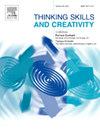Design and validation of CRISENSE, a novel critical competence assessment tool for Spanish adolescents and young adults
IF 3.7
2区 教育学
Q1 Social Sciences
引用次数: 0
Abstract
The acquisition of critical competence is essential at all educational levels. The measurement of this competency presents a significant challenge, particularly considering the methodological complexities involved.
Developing tests to assess critical competence requires rigorous processes of elaboration and validation, without which the validity of the results can be affected. Most existing Spanish tests are translations from other languages –such as English. This often affects the readability of the questions, and in turn the validity of the tests. To address this issue, this study proposes and validates CRISENSE, a critical competency measurement tool created in Spanish that addresses three dimensions: comprehension, deduction, and critical positioning.
CRISENSE was designed based on the existing Watson-Glasser and Halpern critical thinking tests, and pre-tested by a panel of experts in critical competence and reading comprehension. The resulting tool was subjected to testing with a sample population of 575 students, comprising individuals from secondary, high school, and university levels of education. The psychometric properties of the test were evaluated through descriptive analysis, item homogeneity, confirmatory factor analysis, and a measurement invariance study between sexes and between educational levels. Additionally, the reliability of the scores was evaluated using Cronbach's Alpha coefficient. The results demonstrated positive evidence of validity and reliability of the test scores, exhibiting satisfactory adjustment indices and coefficients in each analysis. Consequently, the critical thinking test can be deemed as a valuable tool for assessing this construct in Spanish students, contributing to the expansion of current scientific evidence on this topic.
求助全文
约1分钟内获得全文
求助全文
来源期刊

Thinking Skills and Creativity
EDUCATION & EDUCATIONAL RESEARCH-
CiteScore
6.40
自引率
16.20%
发文量
172
审稿时长
76 days
期刊介绍:
Thinking Skills and Creativity is a new journal providing a peer-reviewed forum for communication and debate for the community of researchers interested in teaching for thinking and creativity. Papers may represent a variety of theoretical perspectives and methodological approaches and may relate to any age level in a diversity of settings: formal and informal, education and work-based.
 求助内容:
求助内容: 应助结果提醒方式:
应助结果提醒方式:


